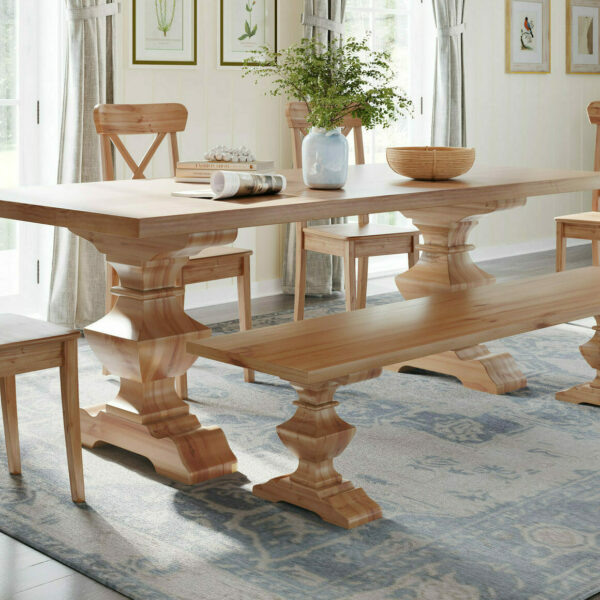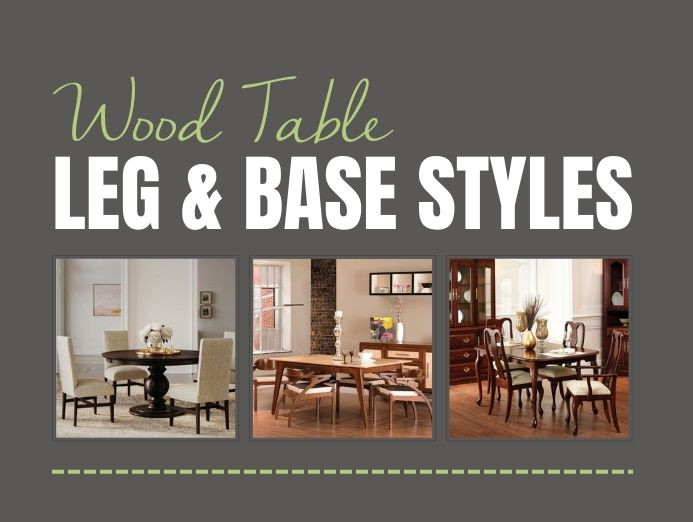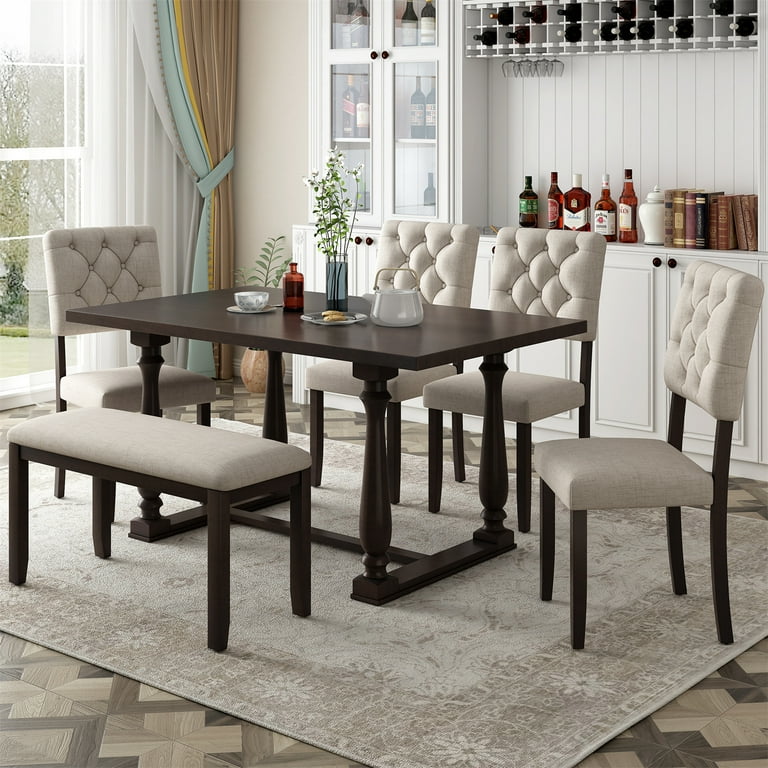Specialist Tips for Putting Up Dining-room Table Legs for Optimum Stability
When it concerns installing dining-room table legs, achieving optimum security is vital for both functionality and visual appeals. The process starts with selecting the appropriate materials and equipment, adhered to by careful placement and consideration of weight distribution. Each step plays an important function in making certain that the completed item withstands daily use without jeopardizing safety or design honesty. Nonetheless, comprehending the subtleties of these aspects can dramatically influence the total end result. What particular techniques can improve security even further?
Pick the Right Legs
When selecting the proper legs for your dining room table, it is important to take into consideration both functionality and visual appeals. The legs you pick will dramatically influence the total style and security of the table. Initially, examine the table's meant usage; if you anticipate frequent gatherings, stronger legs, such as those made from solid timber or steel, might be preferable, as they supply enhanced resilience and assistance.
Conventional dining tables normally vary from 28 to 30 inches in elevation, so make certain the legs align with this requirement for convenience. Tapered legs can add a modern touch, while turned legs may communicate a much more classic aesthetic.

Select Appropriate Hardware
How can the ideal hardware boost the security and long life of your dining area table? The choice of appropriate hardware is crucial to ensuring that the legs of your table are safely affixed and able to hold up against routine usage. High-quality screws, screws, and brackets give the needed toughness to support the weight of the table, in addition to any added lots positioned upon it during meals or celebrations.
When picking screws, choose those made from durable products such as stainless-steel or brass, which resist rust and keep integrity in time. The size of the screws is equally important; they need to permeate deeply into the table's framework without compromising honesty. For bolted links, think about utilizing lock washing machines to stop loosening up due to vibration or motion.
Furthermore, using edge brackets can add additional assistance, specifically for larger tables or those with much heavier tops. These brackets distribute weight evenly and assist preserve the table's shape. Making sure that the equipment you pick is suitable for the certain materials of your table will better boost its general stability and durability, allowing you to appreciate your eating experience for years to find.
Ensure Proper Positioning
Proper placement of dining room table legs is important for both aesthetic appeal and practical security. Misaligned legs can lead to an uneven table top, which might not just be visually unappealing however likewise jeopardize the table's use. To attain ideal alignment, start by measuring the distance from the table's edges to the leg accessory points. This guarantees that each leg is located equidistant from the sides, developing a balanced look.
Make use of a degree throughout installment to verify that each leg is vertical to the tabletop. It is recommended to note the preferred leg settings on the underside of the table with a pencil or masking tape before protecting them.
In addition, ascertain the positioning after the preliminary screws are tightened, as changes may be needed before completely safeguarding the hardware. By prioritizing correct positioning, you not only enhance the table's total style but additionally guarantee that it stays useful and stable for years to find.

Consider Weight Distribution
After ensuring proper alignment of the dining-room table legs, it is essential to take into consideration weight circulation to enhance security and capability. dining room table legs. Proper weight circulation is essential in avoiding making certain and tottering that the table can support its intended tons without danger of tipping or collapsing
When placing the legs, ensure they are positioned at equal ranges from the facility of the table to evenly disperse the weight across the framework. Consider the weight of the tabletop and any kind of items that will regularly hinge on it, such as tabletop appliances or attractive items. Tables with heavier surfaces must preferably have legs located closer to the corners, as this makes the most of the base of support and reduces the risk of instability.
Furthermore, if the table is planned for usage in a high-traffic area, think about browse around this site using larger products for the legs or adding stabilizing components, such as cross-bracing or a lower shelf - dining room table legs. These changes can aid keep equilibrium and avoid shifting throughout usage. Ultimately, a well-considered weight distribution strategy will dramatically enhance the table's overall efficiency, ensuring it remains a practical and eye-catching focal point for your eating space
Examination Stability Before Usage
Examining the security of the eating room table before usage is a crucial action that should not be ignored. Ensuring that the table is safe and secure and secure can avoid mishaps and prolong the lifespan of the furniture. Begin by applying gentle stress to numerous points on the table surface area. Lower on the center and after that along the edges, shifting or observing any kind of wobbling. Recognize the legs or joints that may call for modification. if the table reveals instability.
Next, check that all fasteners and screws are tightened correctly. Loose links can result in instability and potential damage gradually. If needed, utilize wood glue on joints to boost security, guaranteeing to enable sufficient drying time.

Verdict
To conclude, the installation of eating space table legs requires careful factor to consider of products, weight, alignment, and equipment distribution to achieve optimum stability. By picking strong legs and high-grade bolts, making sure wikipedia reference accurate alignment, and distributing weight evenly, the architectural honesty of the table can be considerably improved. Performing a stability test prior to normal use better guarantees that the table will hold up against daily pressures, consequently giving a secure and trusted eating experience.
When it comes to mounting eating area table legs, accomplishing optimum stability is critical for both functionality and visual appeals. The legs you select will substantially influence the overall design and stability of the table (dining room table legs). Basic dining tables normally vary from 28 to 30 inches in height, so make certain the legs line up with this criterion for comfort.Correct alignment of eating area table legs is crucial for both aesthetic allure and functional security.In conclusion, the setup of eating space table legs requires cautious factor to consider of materials, weight, positioning, and hardware distribution to accomplish optimum stability
Comments on “The Best Materials for Durable and Elegant Dining Room Table Legs”